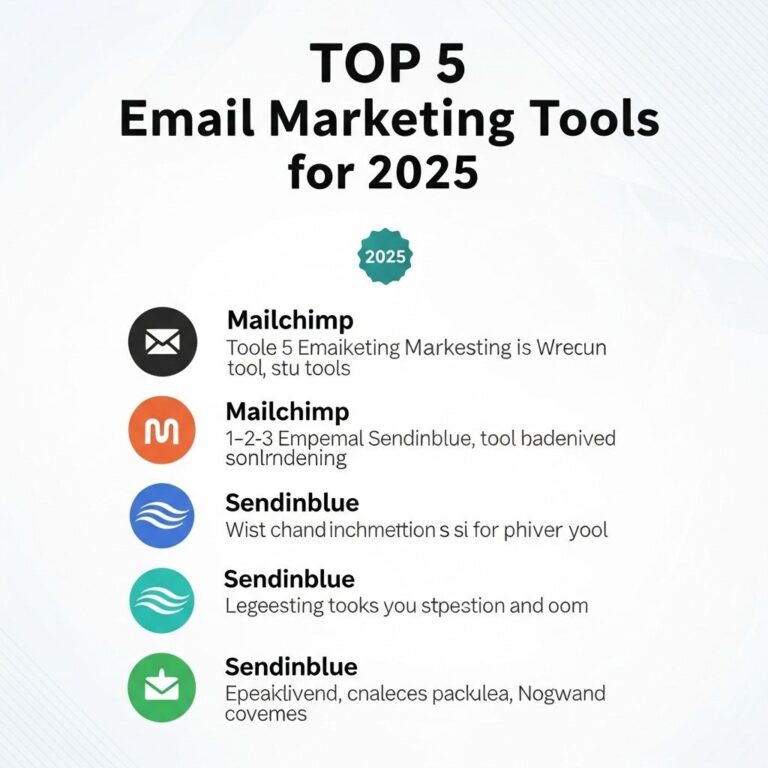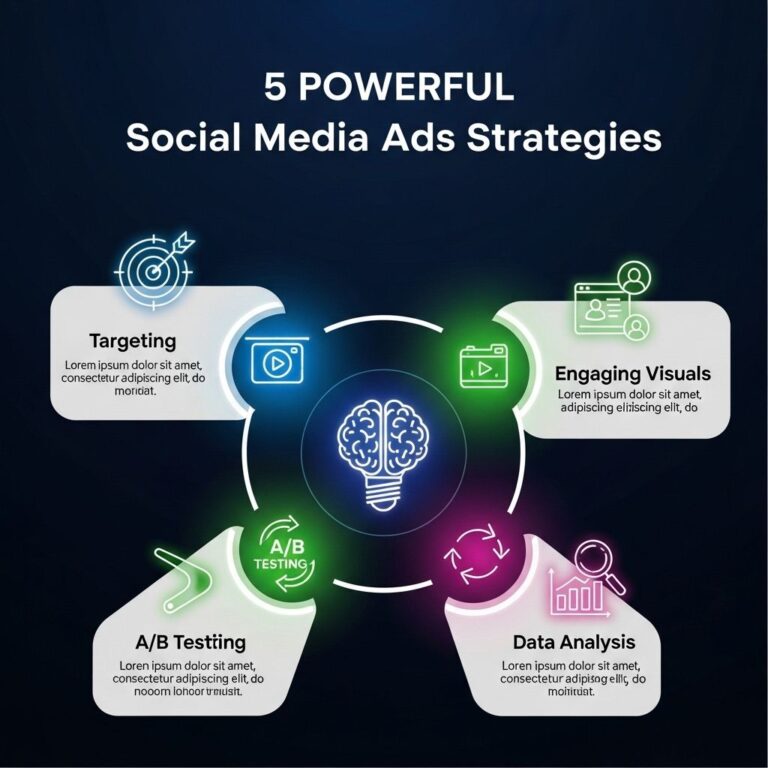Table of Contents
Introduction to Digital Marketing
In today’s digital age, establishing a formidable online presence is crucial for any business aiming to stand out in the competitive market. Digital marketing encompasses a wide array of strategies and techniques designed to enhance brand visibility, engage with consumers, and drive sales. In this article, we’ll explore key components of digital marketing and how they can be utilized to craft a compelling online presence.
Understanding Your Audience
Before embarking on any digital marketing journey, it is essential to understand your target audience. Knowing who your customers are, what they need, and how they interact online allows businesses to tailor their approaches for maximum impact.
- Conduct demographic research to understand age, location, and preferences.
- Use surveys and feedback to gather insights into consumer behaviors.
- Utilize analytics tools to track engagement and refine strategies.
Thoroughly understanding your audience sets the stage for success in digital marketing. The insights gathered not only help in developing targeted marketing campaigns but also enable businesses to anticipate emerging trends and adapt quickly. Building a precise customer profile allows for more personalized and impactful engagement, turning prospects into loyal customers.
SEO: The Foundation of Visibility
Search Engine Optimization (SEO) is an indispensable tool in digital marketing. By optimizing content for search engines, businesses can improve their visibility and organic reach.
Here are some SEO strategies to consider:
- Keyword research and integration for relevant search terms.
- On-page SEO techniques such as meta tags and alt text.
- Off-page SEO activities like backlinking and guest blogging.
SEO is much more than just sprinkling keywords across your web pages. It requires a strategic approach that considers the ever-evolving algorithms of search engines. By creating valuable and engaging content that meets user needs, businesses can improve their SERP rankings. Additionally, technical SEO elements such as improving site speed, ensuring mobile-friendliness, and enhancing user experience play significant roles in optimizing a site for search engines.
Leveraging Content Marketing
Content marketing is another powerful tool that involves creating and distributing valuable, relevant, and consistent content to attract and engage a target audience.
Effective content marketing includes:
- Crafting informative blog posts that address customer pain points.
- Developing engaging video content for platforms like YouTube.
- Sharing insightful infographics and guides.
The key to successful content marketing lies in understanding the needs and challenges of your audience. By providing solutions and addressing pain points, businesses not only attract attention but also build authority and trust. The content needs to be both engaging and educational, encouraging users to spend more time on the site, which can improve search rankings and conversion rates.
Utilizing Social Media for Engagement
Social media platforms are vital channels for engaging with audiences and promoting brand messages. Different platforms cater to varying audience demographics, so crafting platform-specific strategies is essential for effective engagement.
Each social media platform has a unique user base and demands a tailored approach:
- Facebook: Ideal for building community and engagement through posts, comments, and groups. Facebook’s ad platform offers powerful targeting options for reaching specific audience segments.
- Instagram: A visual-centric platform perfect for showcasing products, lifestyle, and brand storytelling through images and short videos.
- LinkedIn: Known for B2B marketing, LinkedIn is the go-to platform for professional networking, industry insights, and lead generation.
- Twitter: Great for real-time engagement and staying updated with trends. Brands can use it for customer service, brand voice, and quick updates.
- TikTok: Despite being newer, it is a rapidly growing platform suitable for creative and viral content aimed at younger audiences.
Crafting a presence on these platforms involves regular posting, responding to comments, and participating in relevant conversations. Consistency and authenticity play vital roles in building rapport and community with your audience. Moreover, leveraging analytics to understand what types of content perform best can refine future marketing efforts, ensuring they resonate well with your audience.
Email Marketing: Direct Engagement
Email marketing offers a personalized approach to engage customers directly with tailored messages crafted to meet their needs and preferences. Maintaining a well-segmented mailing list enriches this strategy.
Effective email marketing involves several best practices:
- Personalization: Use recipient names and tailor messages based on previous interactions to make the emails feel bespoke and relevant.
- Segmentation: Divide your email list into meaningful segments based on behavior, interests, or demographics to deliver more targeted content.
- Automation: Employ automated campaigns like welcome emails, re-engagement campaigns, or abandoned cart reminders for timely and efficient communication.
- Content Strategy: Provide a balanced mix of promotional content, valuable insights, and personalized offers to keep the audience engaged without being overly salesy.
Email remains a potent channel for nurturing leads and maintaining customer loyalty. By offering exclusive content, promotions, and information, businesses can keep audiences engaged while driving conversions. Additionally, email campaigns can be tracked and optimized based on open rates, click-throughs, and conversions, providing clear metrics to measure success.
Analytics and Continuous Improvement
No digital marketing campaign is complete without proper analytics and iterative improvements. Analytics tools provide data-driven insights into the performance of your campaigns, helping to identify what works well and what needs adjustment.
Key aspects of leveraging analytics include:
- Setting Clear KPIs: Identify key performance indicators (KPIs) such as conversion rates, website traffic, and social media engagement to evaluate success.
- A/B Testing: Test different variations of ads, email content, and landing pages to determine which elements engage the audience effectively.
- Customer Feedback: Collect and utilize feedback to improve products, services, and marketing strategies continuously.
- Adjusting Strategies: Use analytical insights to adapt and optimize marketing strategies for improved outcomes.
Digital marketing is not static; it requires continuous attention and adjustment. By routinely analyzing performance data, businesses can remain agile, quickly adapting to market changes and consumer behavior shifts. This proactive approach ensures continued relevance and effectiveness in a constantly evolving digital landscape.
Concluding Thoughts
In the era of digital transformation, an effective online presence is more critical than ever. By understanding your audience and implementing robust SEO and content strategies, along with targeted social media, email marketing, and continuous analytics, businesses can create a powerful digital footprint. These efforts culminate in increased brand visibility, enhanced customer engagement, and ultimately, higher sales and business growth.
FAQ
What is the first step in building an online presence?
Understanding your target audience is the first and most critical step in building an online presence. This involves conducting thorough demographic research and utilizing analytical tools to understand consumer preferences and behaviors.
How can SEO improve my online visibility?
SEO improves online visibility by optimizing content to appear higher in search engine results. This involves using relevant keywords, optimizing web page elements, and building backlinks.
Why is content marketing important?
Content marketing is vital because it helps establish authority, build trust, and engage with the target audience through informative and valuable content. It supports other digital marketing strategies by providing a foundation for engagement and conversion.
How can social media enhance my brand’s visibility?
Social media enhances brand visibility by allowing direct engagement with your audience, sharing of content, and participation in conversations. Building a strong presence on relevant platforms facilitates broader reach and interaction with potential customers.
What role does email marketing play in digital marketing?
Email marketing plays a crucial role in providing personalized communication, nurturing leads, and maintaining customer relationships. Through targeted and segmented campaigns, businesses can deliver relevant content directly to their audience’s inbox, promoting conversions and loyalty.









